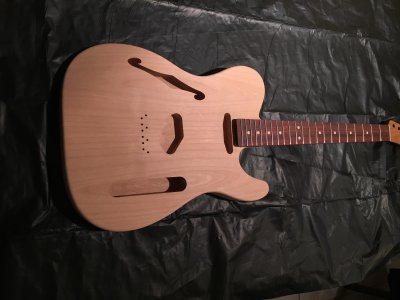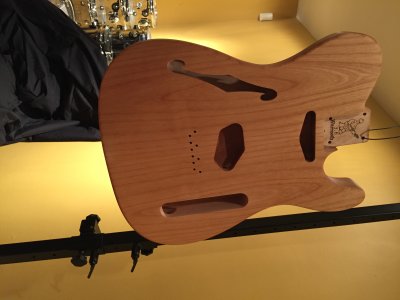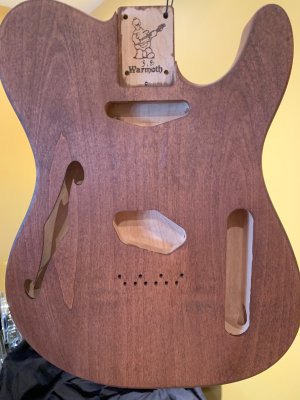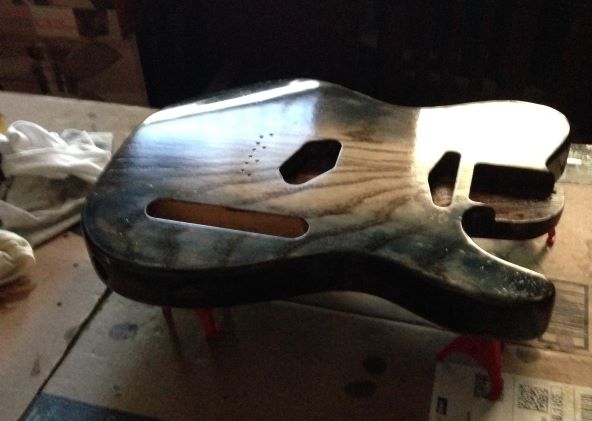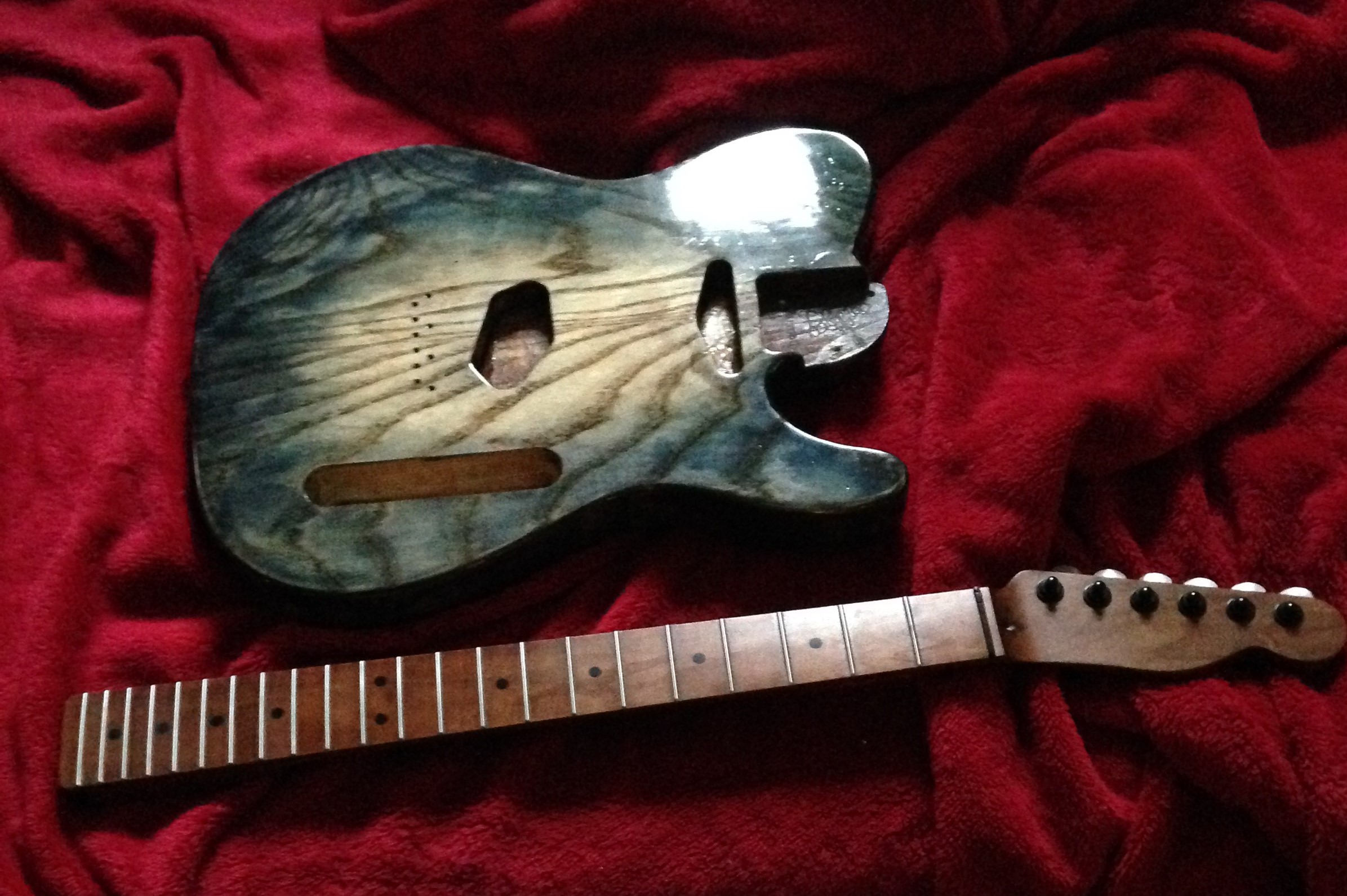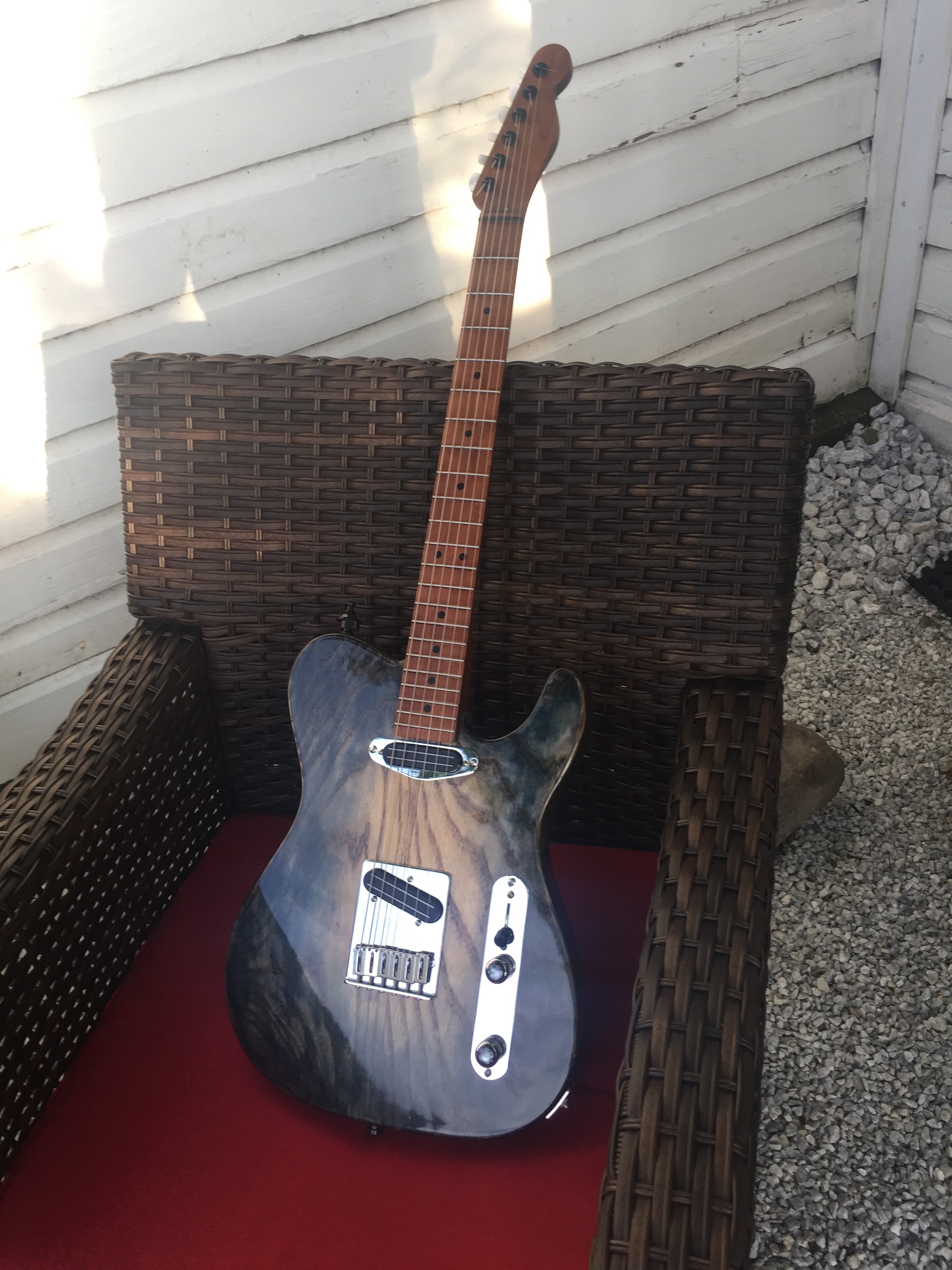Major7Sharp11
Newbie
- Messages
- 9
Hello all,
Title says it all! It's been hard to find a consensus about staining/dying alder and the best methods based on past posts, so I figured I'd open up the convo, share my experience as a data point, and ask some questions.
I have a beautiful alder tele body for my first build that I wanted to stain to more of a chestnut. Was weighing multiple options for staining vs. dying vs. tinting etc. What I happened to have on me was some Minwax English Chestnut stain and Minwax prestain conditioner, from a desk I just finished (very happy with the color and how it turned out), so I figured I'd get out of research/option-paralysis mode and have a go at it.
The first image is the body (with accompanying neck), entirely unfinished. The second image is after applying the prestain conditioner- this REALLY made the grain pop, to the point that the body almost looks like ash! The third image is after first application of the chestnut stain.
The color, for me, is spot on, and I'm actually pretty pleased with how evenly it took to the top (the back has much more of that characteristic alder splotchiness, even after the conditioner, but I'm not too concerned and rather like the knotty rustic look it has). My question, though, is:
Is there any way I can now get the grain to pop out a bit more, with the stain on it? I was a little weary of trying any of the stain then sand techniques, as some posts said it helps alder and others said it doesn't (and I'd hate to negatively affect the evenness of my stain finish, if I were to mess it up at all). But is that a possibility for getting a bit more of the grain to come through? I could sand back and then reapply the next coat of the same color, or I supposed I could shoot to find a stain that is a few shades lighter.
Otherwise, do you suppose with a coat of stain on it, applying some truoil will still help accentuate the grain? I've seen it generally helps accentuate contrasts. I was originally gonna poly the guitar, so if truoil would help bring some of the same contrast that the prestain brought, I'd do a few coats of truoil and then a final coat or two of wipe on poly. Or, if that's not a good idea, I'd just commit to the tru oil and add more coats.
Any wisdom is greatly appreciated. And to be fair, I already think it looks pretty beautiful with the stain- just interested to see if there's anything I can do to enhance.
Title says it all! It's been hard to find a consensus about staining/dying alder and the best methods based on past posts, so I figured I'd open up the convo, share my experience as a data point, and ask some questions.
I have a beautiful alder tele body for my first build that I wanted to stain to more of a chestnut. Was weighing multiple options for staining vs. dying vs. tinting etc. What I happened to have on me was some Minwax English Chestnut stain and Minwax prestain conditioner, from a desk I just finished (very happy with the color and how it turned out), so I figured I'd get out of research/option-paralysis mode and have a go at it.
The first image is the body (with accompanying neck), entirely unfinished. The second image is after applying the prestain conditioner- this REALLY made the grain pop, to the point that the body almost looks like ash! The third image is after first application of the chestnut stain.
The color, for me, is spot on, and I'm actually pretty pleased with how evenly it took to the top (the back has much more of that characteristic alder splotchiness, even after the conditioner, but I'm not too concerned and rather like the knotty rustic look it has). My question, though, is:
Is there any way I can now get the grain to pop out a bit more, with the stain on it? I was a little weary of trying any of the stain then sand techniques, as some posts said it helps alder and others said it doesn't (and I'd hate to negatively affect the evenness of my stain finish, if I were to mess it up at all). But is that a possibility for getting a bit more of the grain to come through? I could sand back and then reapply the next coat of the same color, or I supposed I could shoot to find a stain that is a few shades lighter.
Otherwise, do you suppose with a coat of stain on it, applying some truoil will still help accentuate the grain? I've seen it generally helps accentuate contrasts. I was originally gonna poly the guitar, so if truoil would help bring some of the same contrast that the prestain brought, I'd do a few coats of truoil and then a final coat or two of wipe on poly. Or, if that's not a good idea, I'd just commit to the tru oil and add more coats.
Any wisdom is greatly appreciated. And to be fair, I already think it looks pretty beautiful with the stain- just interested to see if there's anything I can do to enhance.


